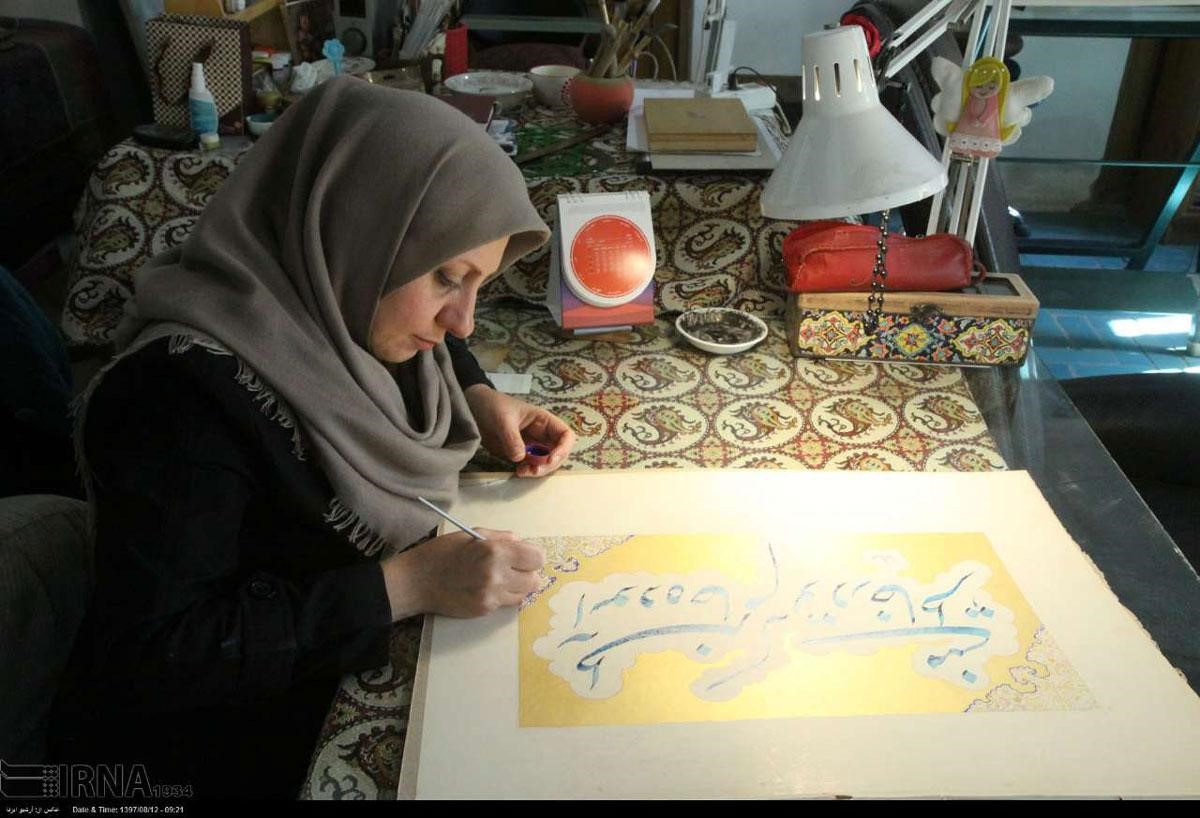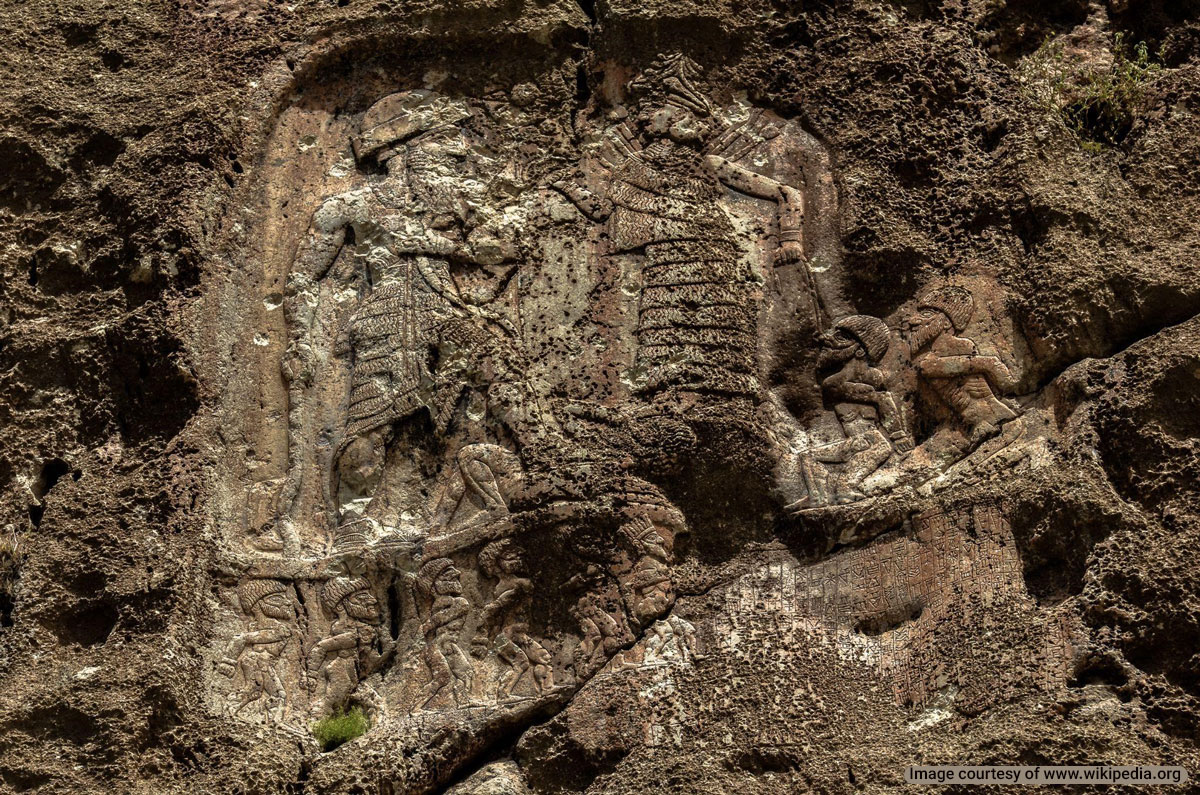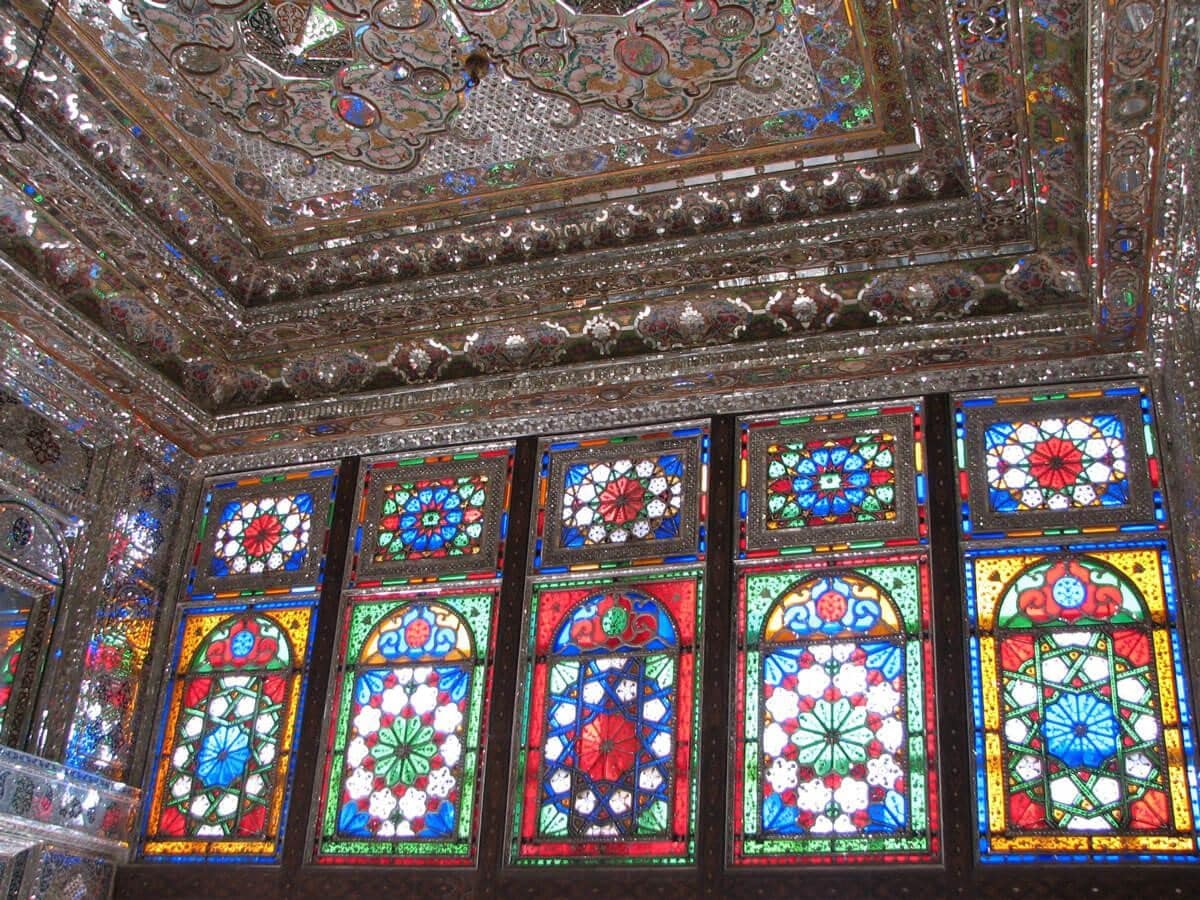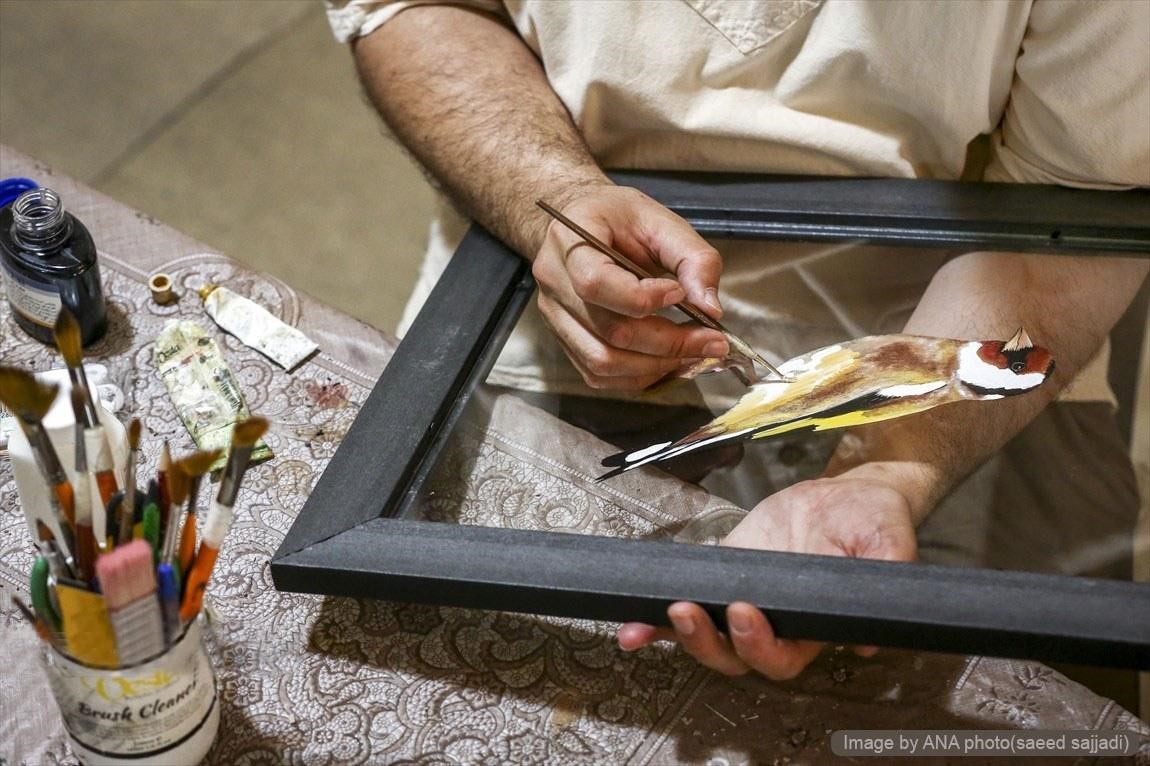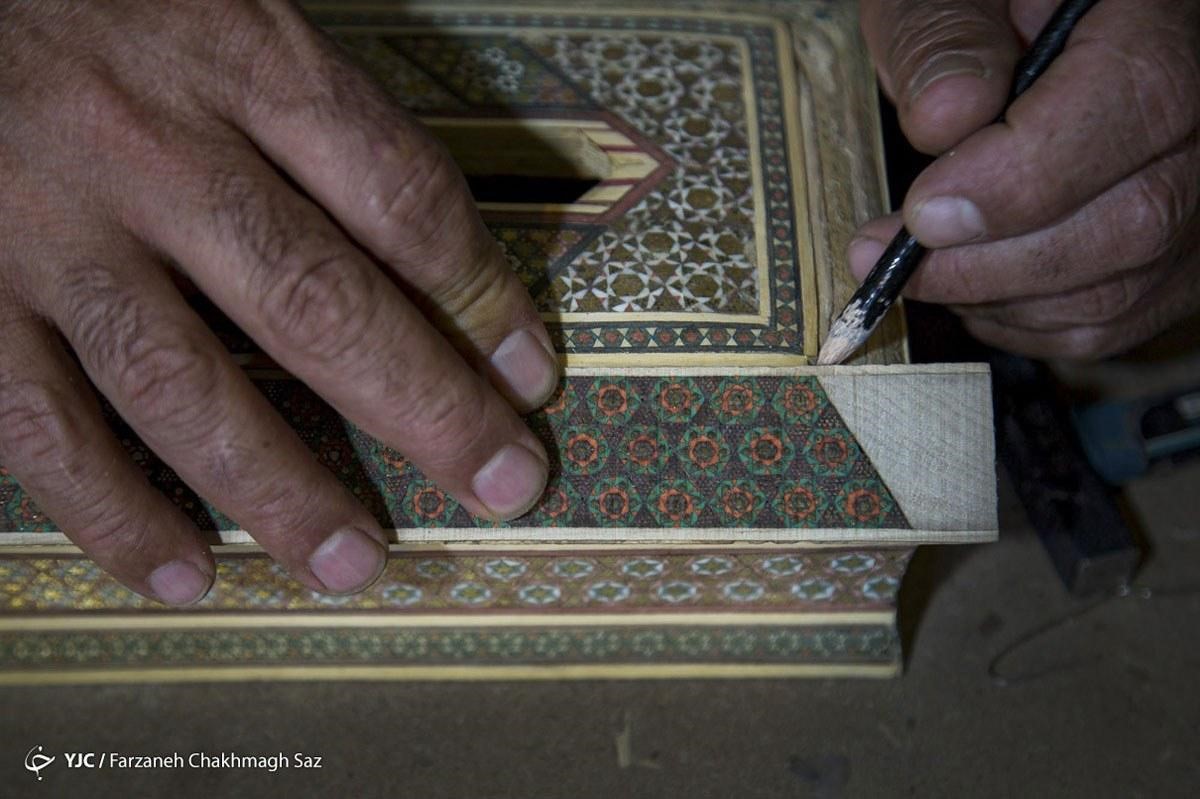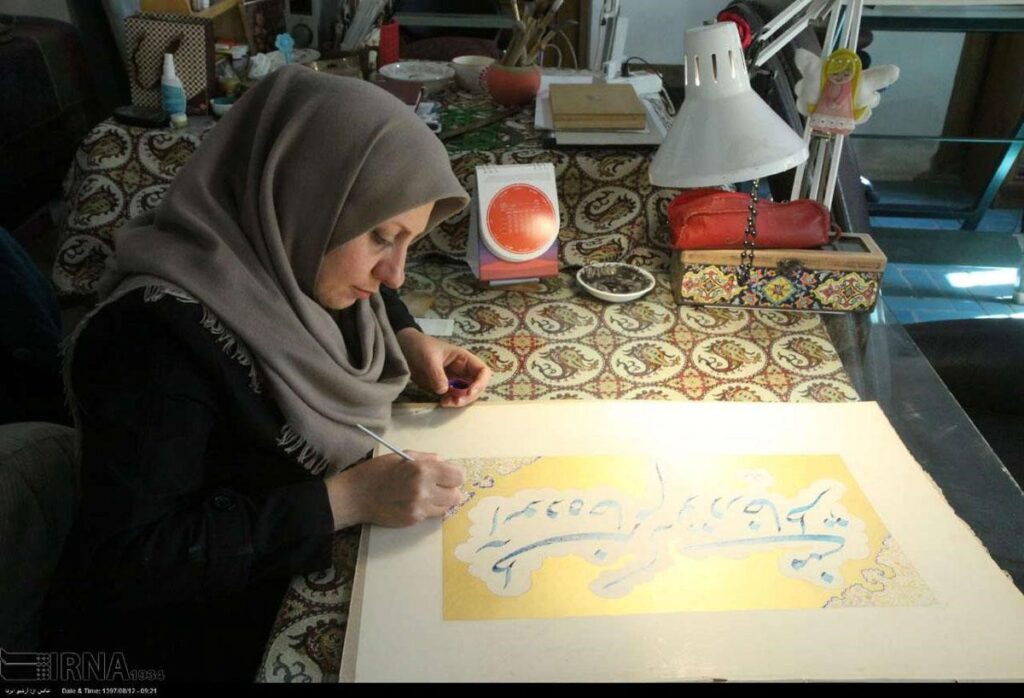
The art of illumination of manuscripts (Tazhib), which means gilding or gold painting manuscripts, is the traditional craft of embellishing different surfaces using original and beautiful motifs. This art is one of the branches of Iran handicrafts, which is world-famous and used in various fields today. Interestingly, this traditional Iranian art was recognized by UNESCO in 2023 and at the 18th meeting of the Intergovernmental Committee for the Safeguarding of the Intangible Cultural Heritage.
It should be mentioned that the art of page layout illumination has a very long history in Iran. Several centuries before the arrival of Islam in Iran and during the Sassanid dynasty, a skilled painter named Mani illustrated his books with paintings to better convey the message. According to the existing evidence, the art of illumination is also a continuation of the Manichaean style.
What is the Art of Illumination (Tazhib)?
The definition of Tazhib in Persian is not very precise. Our knowledge is limited to the names of a few painters and illumination artists who have been mentioned by the authors in antique books and mostly Tezkires (memorandum, containing names and biographies of artists). However, we know that “Tazhib” is an Arabic word derived from the infinitive “Zahab” which means “gold”. Therefore, the art of illumination can also mean gilding and gold painting. The dictionary of Amid describes Tazhib as “embellishing and embossing the pages of manuscript books with gold water and lapis lazuli ink”.
If we want to provide a general definition of this traditional craft, the following can be illuminative:
The art of illumination (Tazhib) is the design, coloring, and gilding of motifs of plant, Arabesque, Khatai (inspired by Chinese calligraphy), geometric, and sometimes human and animal designs to embellish different surfaces using brushes made of natural otter and cat hair.
In general, the beautiful patterns used in this art illustrate all types of religious, cultural, and historical books, collections of poems, artistic anthologies, and beautiful works of calligraphy. These motifs can be implemented on the borders and around the pages of all kinds of books.
Types of Illumination Art and Their Application
Painters and illustrators may use this art in creative ways to embellish religious books, especially the Qur’an. In general, this art is divided into two types: Shane-e and Moarraq, which we will introduce below:
- Shane-e Illumination: This branch of Iranian Tazhib art was invented in the Qajar period, which requires the use of marbled paper.
- Moarraq Illumination: This branch of Tazhib art was invented in the Safavid period, and is applied on special heavy-weight papers.
In the following, we describe examples of the use of this art in different fields:
The Illumination of Calligraphy Art
Calligraphy is one of the most stunning visual arts, and writing elegance is only one of its aspects. In fact, the reason why people like this art can be traced back to its geometric principles and extraordinary layout mechanism. The art of calligraphy is considered to be a beautiful and delicate craft that calligraphers practice with extreme precision and personalized style. In this art, the style of arranging the letters on the paper follows specific principles, which the calligraphers take into account to create mesmerizing and eye-catching calligraphy.
It is said that most of the calligraphers were familiar with the art of illumination and by combining this art with calligraphy, they were able to illustrate the words on paper with such captivating beauty. In the art of calligraphy, all words are illustrated following certain rules of geometry and in a unique layout. The masters of this art and its audience were in awe of these rules for many centuries. In the art of calligraphy, compliance with the principles and delicate points indicate the highest manifestation of the art, not simply writing with elegance. Throughout its long and rich history, great scholars and calligraphers have presented all kinds of scripts and schools of calligraphy.
The Art of Islamic Manuscript Illumination
After the arrival of Islam to Iran, Iranian artists tried to preserve the sanctity of the Quran by using the art of illumination to make the manuscript Quran a visual masterpiece. This art was known as complementary to the calligraphy of religious manuscripts and practiced for its religious importance, as Muslims believed promoting holy texts was a good deed. Many sultans and Iranian artists practiced the embellishment of the Quran and decorated this book with elegant illustrations.
Many artists and illustrators working in the court of kings were equipped with the best tools to implement this art. They used gold, lapis lazuli ink, and the finest types of paper. These artists used to donate manuscript Qurans embellished with illumination art to mosques and holy sites.
Gradually, the art of Tazhib became a kind of main branch of art and various principles and design styles evolved in it. Then, these styles were implemented in other disciplines such as pottery, plasterwork, stone carving, metalwork, fabric weaving, and carpet weaving. Among the most beautiful illuminated artworks in Iranian history, we can mention the chapter headline pages of the Timurid period and the epigraphs of books from the Safavid period.
What is certain is that the calligrapher must have been an expert Tazhib artist and painter. Certain books dating back to the 15th century prove that the artist was a master of the art of illumination, calligraphy, and bookbinding. It is said that in the past, Mozahebs (Tazhib artists) who also mastered the art of calligraphy were known as Kateb (Scribe). Those artists who engaged in all book-related practices such as paper making, calligraphy, applying the art of illumination on chapter headlines, duplication, and selling books, were known as Varagh.
The Art of Illumination in Other Branches of Visual Arts
In addition to book embellishment, this art is also applied in other branches of traditional visual arts. Below are examples of the use of this art:
The Art of Illumination in Illustration
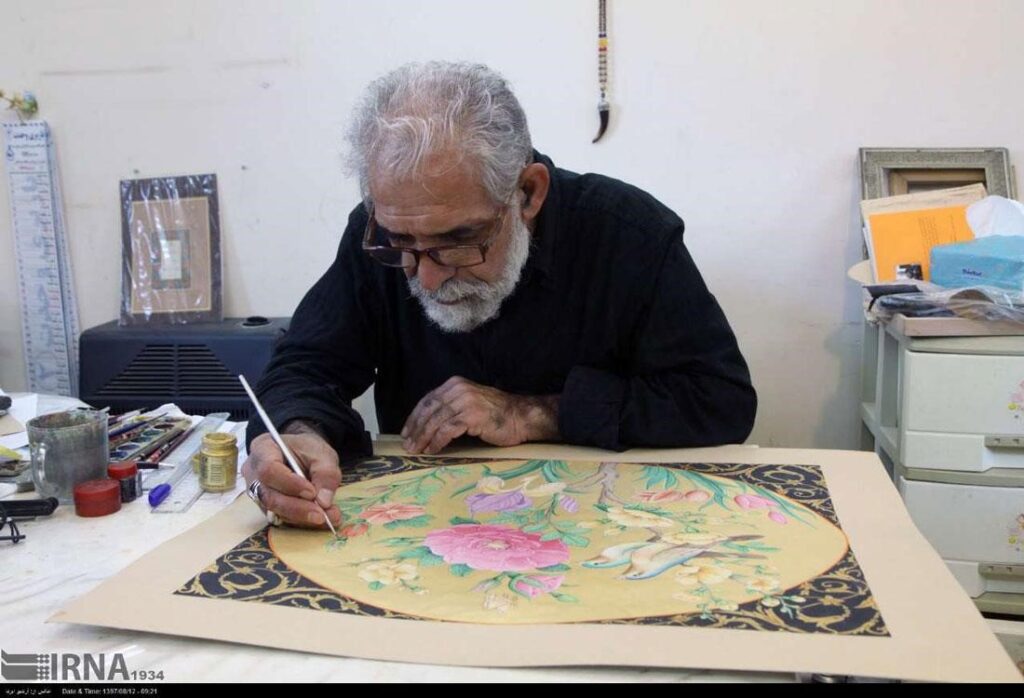
As you know, the art of illustration is the practice of delicate painting with embellishment features and has been common in the Near East since ancient times. This art is usually practiced in illustrating all kinds of scientific, medical, religious, and especially literary books. Interestingly, some artists consider the art of illumination as a subcategory of illustration; However, this art has evolved into an independent field over time. Of course, we cannot ignore the relationship between these two art styles.
If we want to describe the orientation of this art in illustration, perhaps the best definition is: “The art of embellishing religious and historical books, buildings, paintings and other works of art with golden and colorful motifs.”
Tazhib is known as one of the original and most delicate Iranian arts, which is used along with other art styles such as illustration, enameling, inlaying, and bejeweling. When it comes to illumination in illustration, the use of motifs such as Arabesque, Khatai and Mosha’ar (emblematic motifs) are the most prominent practices. Below are the characteristics of these beautiful motifs:
Arabesque Designs
After the adoption of Arabic scripts by Iranian artists, the embellishment of calligraphic books found a new form. In this period, artists started using golden colors to paint the flower, stem, and leaf motifs in the borders, introduction, and final pages of books and epigraphs. Arabesque designs, which were popular among Iranian artists before Islam in the form of flora-inspired embellishment patterns, with cursive and tangled lines, were used in illumination composition.
Currently, the use of Arabesque motifs has evolved through using geometric and orderly patterns in the design of illumination patterns. Sometimes, Kufic script designs are also used as models in this style.
Khatai Designs
In this art, motifs of stems, leaves, and intertwined flowers are also implemented in spiral patterns and with special colors. These motifs are known as Khatai motifs and we also know them as flower and bush motifs.
Mosha’ar Designs (Emblem Designs)
The combination of Arabesque and Khatai motifs and the use of figures of birds, animals, natural landscapes, and human figures are called Mosha’ar motifs or Tasheer. In this style of illumination embellishment, it is customary to use the image of legendary creatures such as Homa, Simorgh, and Dragon and animals such as lion, leopard, and deer.
It is interesting to note that gold color is mostly used in Tasheer style illumination and other colors are used less. In addition, animal motifs are not used in the illumination of the Quran.
The Art of Illumination on Wooden Surface
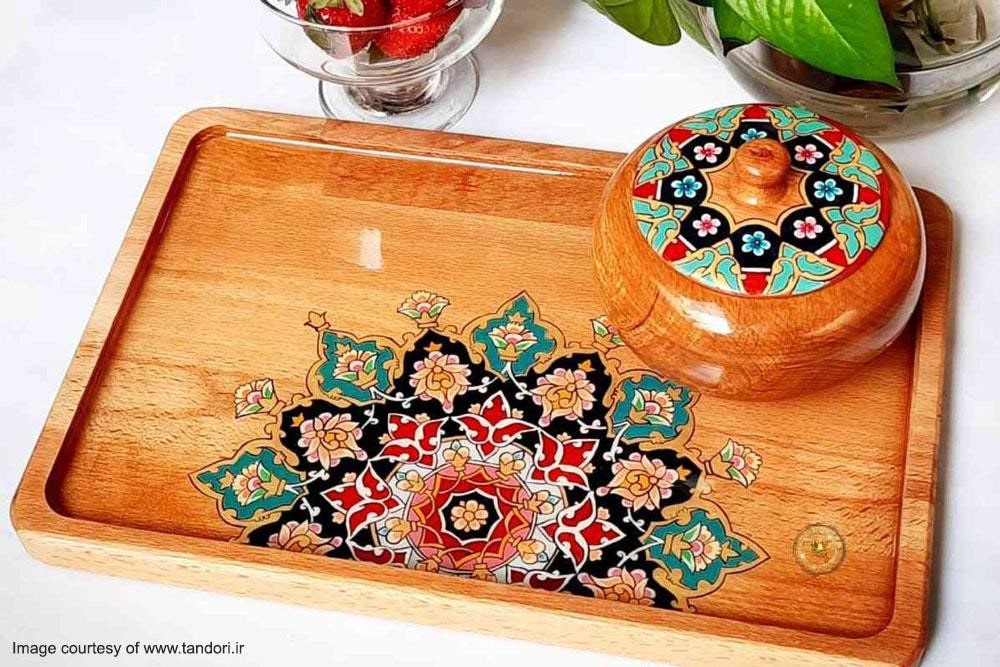
As artists grew fond of Tazhib art, it was gradually applied on surfaces other than paper. For example, it became common to apply golden designs on wooden utensils and containers. The art of illumination on wood uses various tools such as pencils, erasers, compasses, protractors, brushes, polished wood, and various colors to implement patterns.
Illumination Art in Book Layout Design
In Iran, the art of book layout design has an extended history that goes back to the pre-Islam era. It is said that centuries ago, a skilled Iranian painter named “Mani” illustrated his books with different figures to better convey his message to the audience. Today, we do not have any evidence from that era or Mani’s paintings. This is because the clergy of the Zoroastrian temple did not accept Mani’s religion at that time and destroyed his works.
The art of book layout design in the Islamic period persisted through the use of this art. Researchers consider this art as a continuation of the Manichean style.
Tazhib Visual Arts
The arts that are formed based on visual aesthetics are known as visual arts. Among these arts, we can mention illustration, calligraphy, sculpture, hand printing, graphics design, etc. Visual arts include another group called applied arts such as industrial design, graphic design, fashion design, interior design, decorative art, and such examples. The art of illumination is also considered one of the visual arts that implement visual aesthetics in the design of its motifs.
Introducing Tazhib; A Traditional Iranian Art
According to the studies carried out in this regard, the history of the art of Tazhib goes back to the Sassanid era. If we examine the remaining works from this period and other eras of Iranian art, we can detect the impact of Iranian illumination art in visual arts in other countries such as India, the Ottoman Empire, and Arab countries. It is said that the migration of artists to India during the Safavid period led to the emergence of the Indo-Iranian style of painting that led to the creation of incredible artworks.
At that time, the art of Tazhib was not very common in the territory of the Ottoman Empire. The migration of Iranian artists led to the development of this art there. On the other hand, the Arab countries experienced a brief era of prosperity with the said art due to the presence of Iranian artists; But as Iranian artists left these countries, this art never peaked in that culture.
We went over this brief history to state that the art of Iranian illumination art is unique in the world. You may see examples of this art in European culture, but they are very different from the Iranian style of Tazhib. In the following, we examine the use of Iranian Tazhib art in various books:
The Art of Illumination in Famous Shahnameh Manuscripts
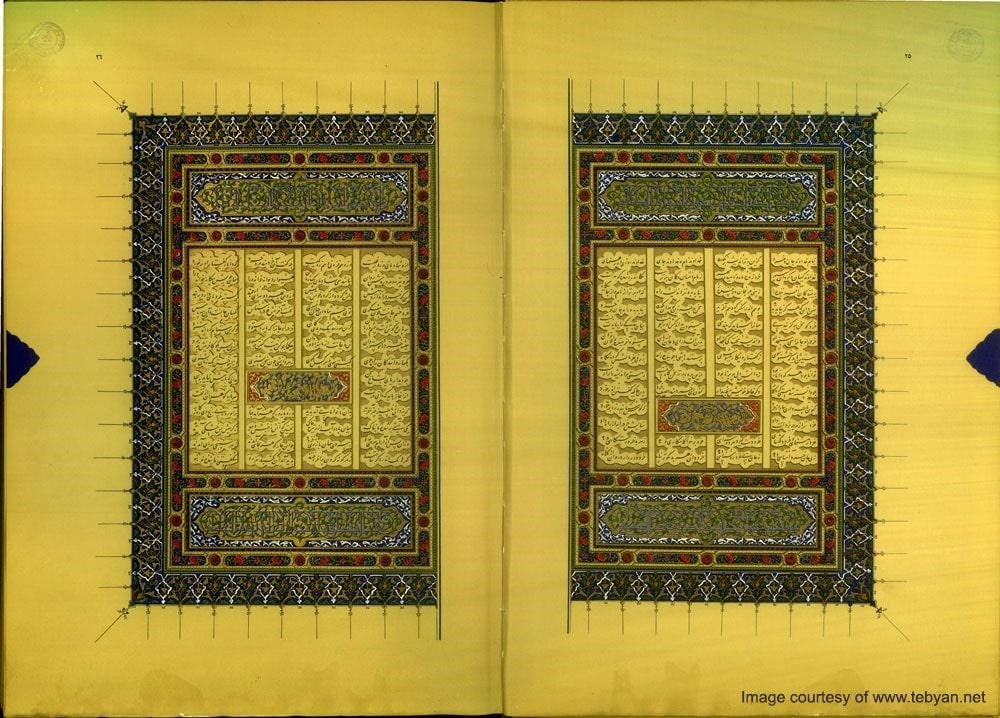
Most of the historical Shahnameh manuscripts owe their unique attraction to the illustration of beautiful motifs in the borders and throughout their pages. With this art, they attract the readers’ attention, avoid the reader’s fatigue, and make reading the stories more pleasurable. Among these Shahnamehs, we can mention the Great Mongol Shahnameh (Demot), the Shahnameh of Shah Tahamasp, and the Baysunghur Shahnameh. Among these, the Baysunghur Shahnameh is a perfect example, which is considered rare in terms of elegance and illumination. The importance of this Shahnameh comes from the use of arts such as calligraphy, page layout design, border embellishments, illumination, and illustration.
Tazhib in Literature and Poetry Books
Among the important literary books that have been decorated with Tazhib art, we can mention the collections of poems by Hafiz and Saadi and Persian fiction books such as “Kalila and Demna” and “One Thousand and One Nights”. The figures used to decorate these books are illustrated in different sections on the beginning, middle, and end pages.
Illumination of Scientific Literature
During the Qajar period, with the promotion of literacy and learning among the common folk, many literary and scientific books were printed. These books included numerous embellishments in proportion to the financial power and social class of the person ordering the book. The scientific literature of the Qajar period decorated with the art of illumination covered various subjects such as philosophy, medicine, dictionary, and astronomy. The first pages of all these books, kept in the National Library of Iran, contain titles, inscriptions, and tables of contents.
Learn More About the Traditional Art of Illumination in Iran
One of the unique traditional Iranian handicrafts recognized by UNESCO is the art of illumination (Tazhib). This art developed in ancient Iran and prospered in the early centuries of the Islamic era. Today, there is a type of illumination art in Europe in which various motifs such as grape vines, colored leaves and sometimes images of birds, animals, and humans. Of course, this type of illumination is in no way comparable to Iranian Tazhib.
Frequently Asked Questions About the Art of Illumination
If you don’t find the answer to your question in the list below, ask it in the comments section at the end of this post. We will respond to it as soon as possible.
What type of art is the art of illumination?
This art is included in the group of visual arts that is a sight to behold.
What art styles can benefit from the art of illumination?
In the past, this art was only used to embellish books and manuscripts, then it gradually made its way to other art fields such as illustration, book layout design, and illumination on wood.
What motifs are used in the art of illumination and Tazhib?
In Tazhib, it is more common to use Arabesque, Khatai, and Masha’ar (emblematic) motifs.






